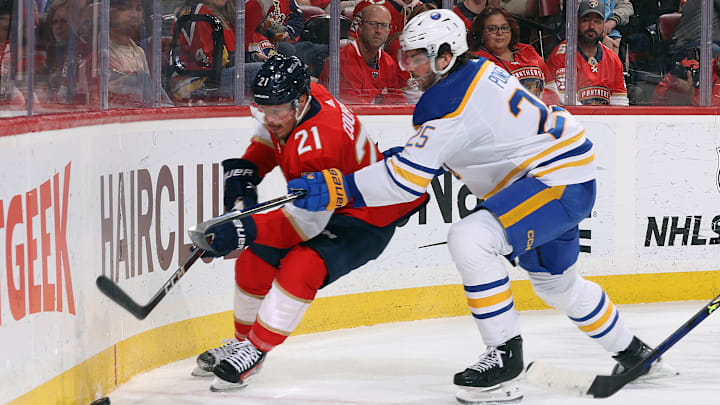Boarding in hockey is a penalty that can result in a game misconduct if it’s severe enough, but other times, this isn’t the case, since the infraction doesn’t always result in an injury. In short, if one player hits (checks) another player into the boards and if the officials deem the act as violent, they will issue a boarding penalty.
This can also occur if a player is pushed and not completely checked into the boards, and it can also happen when tripped into them. If the player pushed, checked, or tripped gets up, and acts as though nothing occurred, then a two-minute minor penalty will ensue, forcing the offending team to go short-handed.
But if the player appears to be injured, the offending team can expect a five-minute major and even more. Should the referees believe the offending player intentionally tried to hurt their opponent, a game misconduct will occur, as was the case when former Sabre Eric Robinson committed the penalty on Justin Barron of the Montreal Canadiens last season.
Boarding in hockey can result in serious ramifications for the offending team
As you can see in the video below, Robinson slightly lowered his body and delivered such a hard hit into the boards that you can clearly hear the impact. Barron was slow to get up, and after further review, Robinson’s five-minute major turned into a game misconduct.
If you’re new to the game, you may see officials take a long look at the replay video, and changing the initial call is something to be aware of. While this particular play was rather controversial in terms of whether Robinson should have been sent to the locker room early, it’s nonetheless a prime example of boarding and what the penalty can ultimately lead to.
Now, something to remember is that players are slammed against the boards all the time, and often, officials won’t deem the play violent. This usually happens when players are skating into the forecheck or are looking to make a clean play, using their shoulder to initiate contact with an opponent, to battle for the puck.
So when you watch a hockey game this season, and you see players slamming one another against the boards, remember that you won’t see stoppages in play every time this occurs.
